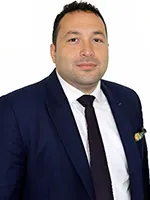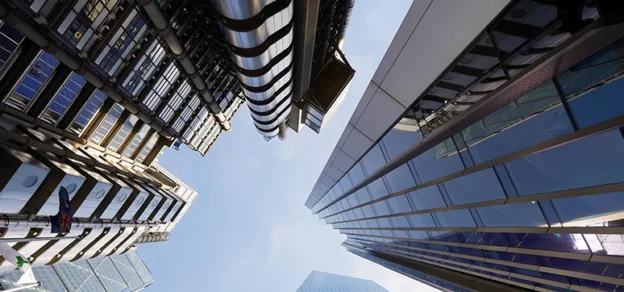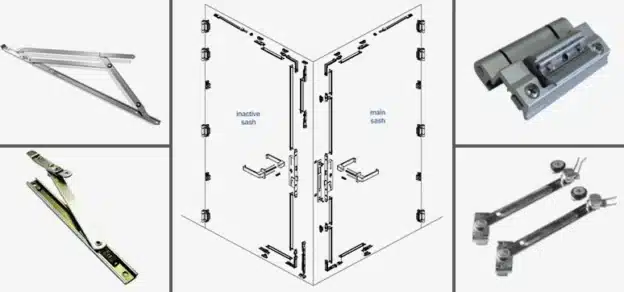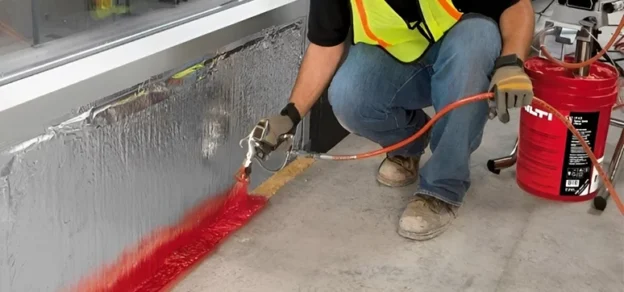A crucial component of building design and construction is façade fire safety, which aims to reduce the chance of flames spreading to a structure’s façade. Making sure proper fire safety measures are in place is crucial given the rising popularity of high-rise buildings and complex building façades.
Multiple components make for a well-designed façade fire safety system. To prevent the spread of fire, it is important to choose and use fire-resistant materials like insulation and cladding. To improve the fire performance of these materials, fire-resistant coatings, and treatments can be used.
Effective compartmentalisation is further important. To stop the spread of flames both vertically and horizontally, this entails installing fire breaks, such as fire-resistant barriers, into the façade.
The formation of smoke is reduced and safe evacuation is made possible by adequate ventilation systems and smoke control technologies.
The efficiency of façade fire protection elements must be regularly checked and maintained. Building owners and managers should carry out thorough fire safety plans, hold fire drills, and instruct residents on emergency procedures.

Overall, a strong façade fire safety plan includes a combination of compartmentalisation, ventilation systems, fire-resistant materials, and maintenance procedures. We can improve a building’s resilience and save lives and property in the event of a fire by following strict fire safety regulations.
Common Causes of Fire Safety in Buildings and Ways to Reduce Fire Risks
Façade fire safety, of the impact thereof of fires on façade, can generally be viewed from a series of points. The key elements which in my experience are the major factors are social responsibility, quality of build and fire ignition source, and combustibility of the façade. However, the underlying risk will generally lead to the façade construction and combustibility. Consequently, considering all the variables associated with façade fires, mitigating risk is a comprehensive solution or approach, says Alexander Castellanos, Head of Fire and Life Safety, WSP – Middle East.

Mahmoud Ehab, Fire Engineer, at Vortex Fire Safety Consultancy (Dubai), believes that the UAE and the Middle East share many of the same leading causes of fires within buildings. Unattended cooking is a leading cause of fires in the region, the kitchen will usually be the source of a fire in a residential building. This is accelerated due to the presence of many flammable materials within kitchens.
Another source of fire in buildings is electrical appliances, and due to the developed state of Middle Eastern countries, there is a higher dependency on electrical appliances. Fires may arise due to faulty wiring, overloaded circuits, or improper installation. A third cause of fires can be attributed to smoking and especially hookah or shisha, which are usually smoked on balconies and if not disposed of properly, can easily lead to a large spread fire.

“Common causes of fire risks I have seen in buildings are the use of combustible material in façade and inadequate compartmentation between floors. It was common practice in Europe to consider safe buildings with combustible materials used in the façade and improper detailing at floor-to-floor interfaces. Now things are changing, and the risk of unsafe buildings related to fire performance is very low”, says Alessandro Massarotto, Founder, of Frame.
Role of Design Systems in Fire-safe Buildings
For new buildings, the risk mitigation starts at the design level where consultants must specify materials fire for purpose based on the size of a project and occupant characteristics. We have to be technical in how we approach fire risk mitigation as this should be through meeting the requirements of the local fire code or benchmarking to international code standards when it is identified that a local code may have gaps, advises Alexander. When it comes to our region – the applicable codes such as UAE Fire Code, Saudi Building Code, or NFPA Standards that govern fire safety requirements in various countries in the region comprehensively provide a series of performance requirements for façades in terms of fire safety.
According to Mahmoud, design systems play a major role in providing a fire-safe building and increasing the odds of survival in the event of a fire, God forbid. Various systems are implemented with the key focus of preventing, detecting, containing, and controlling the fire. Fire design systems range from passive systems such as compartmentation and fire stop and fire sealants, to active fire systems such as sprinklers and fire detection and alarm systems.
The façade designer shall be aware of local regulations and have international experience to specify suitable materials and technical solutions to avoid fire spread in the building. Fire suppressing systems, materials used, and design must be fully coordinated to make sure that the risk of fire spreading is reduced as much as possible, believes Alessandro.
Passive & Active Fire-Safe Protection Methods
 An aspect of façade fire safety and fire safety in general is social awareness and social responsibility which is a subject matter for which we can aim to raise more awareness. Some codes and standards have taken initial steps to achieve awareness by governance by prohibiting grills and cooking equipment on balconies of high-rise buildings. However, governance is only one step and there are a few other opportunities in which we can improve – such as fire safety professionals raising awareness. In the end, is about highlighting and bringing information to the public activities or habits that knowingly or unknowingly impact the risk of fire, notes Alexander.
An aspect of façade fire safety and fire safety in general is social awareness and social responsibility which is a subject matter for which we can aim to raise more awareness. Some codes and standards have taken initial steps to achieve awareness by governance by prohibiting grills and cooking equipment on balconies of high-rise buildings. However, governance is only one step and there are a few other opportunities in which we can improve – such as fire safety professionals raising awareness. In the end, is about highlighting and bringing information to the public activities or habits that knowingly or unknowingly impact the risk of fire, notes Alexander.
Mahmoud explains that passive fire protection methods are designed to provide the building with fire-resistive properties that help contain and limit the fire spread within a building, without requiring any human intervention or action. These systems aim to reduce the spread of heat and smoke and allow more time for evacuation and firefighting operations. Some of the passive fire protection systems include:
- Structural fire resistance
- Fire compartmentation
- Perimeter and cavity fire barriers
- Fire stoppers and fire sealants
- Control of interior finishing, contents, and furnishing
Active fire protection methods are methods that provide a triggered response to a fire. A fire event must take place to activate these protection methods. Active measures are designed to detect, control, and combat the fire. Different active protection measures work in tandem to limit the spread of a fire and allow occupants a safe path to evacuate.
Some active fire protection methods are:
- Fire detection and alarm systems
- Emergency lighting and exit signage
- Automatic sprinkler system (or alternate fire suppression systems)
- Fire hose reels and standpipe systems
- Smoke control systems
- Emergency Voice evacuation systems
 Active fire protection is a group of fire protection systems that require some action or motion to initiate the system in the event of a fire. Examples are fire extinguisher or fire suppression systems which are automated through an alert or a signal. Passive fire protection is based on the design of the building itself, providing compartmentation, reducing the fire spread, and using non-combustible materials. The intent is to protect human life and limit the impact of damage to buildings and their contents, notes Alessandro.
Active fire protection is a group of fire protection systems that require some action or motion to initiate the system in the event of a fire. Examples are fire extinguisher or fire suppression systems which are automated through an alert or a signal. Passive fire protection is based on the design of the building itself, providing compartmentation, reducing the fire spread, and using non-combustible materials. The intent is to protect human life and limit the impact of damage to buildings and their contents, notes Alessandro.
Role Of Fenestration Design in Fire-Safe Buildings
While fenestration design is primarily guided by architectural and aesthetic reasons, they still play a role in the design of a fire-safe building. Fire doors play a key role in providing compartmentation between two areas while still allowing access. Some buildings include smoke vents and windows which aid smoke clearance, increasing visibility for evacuating occupants and increasing the odds of a safe evacuation, opines Mahmoud.
The façade designer shall be aware of the specific interfaces and allowable materials for their system. Again, coordination with other trades like fire engineers and active fire suppression systems needs to be properly carried out, believes Alessandro.
Classifications of Materials in the Event of a Fire
 According to Mahmoud, fire testing involves two important aspects: reaction to fire and fire resistance. However, these aspects are often misunderstood. Reaction to fire tests assesses how a material contributes to the growth of a fire. Materials and systems are classified into different classes, such as Class A1, A2, B, C, and D, based on their performance in these tests. On the other hand, fire resistance tests evaluate a material or system’s ability to prevent the passage of fire, smoke, and temperature from one side to the other. The fire resistance classification includes a time value, such as 15, 30, 60, or 90 minutes, indicating the duration for which the material or system met the specified parameters.
According to Mahmoud, fire testing involves two important aspects: reaction to fire and fire resistance. However, these aspects are often misunderstood. Reaction to fire tests assesses how a material contributes to the growth of a fire. Materials and systems are classified into different classes, such as Class A1, A2, B, C, and D, based on their performance in these tests. On the other hand, fire resistance tests evaluate a material or system’s ability to prevent the passage of fire, smoke, and temperature from one side to the other. The fire resistance classification includes a time value, such as 15, 30, 60, or 90 minutes, indicating the duration for which the material or system met the specified parameters.
In building design, fire-resistant elements like compartmentation walls, floors, fire-stopping systems, and fire doors are required to withstand fire for a specified period. They are designed to prevent the spread of fire and protect occupants. On the other hand, materials such as interior finishes, floor coverings, and façade systems are assessed for their reaction to fire classification, determining their contribution to fire growth.
According to Alessandro, the reaction to fire of materials and fire resistance of the façade and structural components are two different things. The first one provides the combustibility classification of the material and considers the time needed to ignite, droplets caused by the ignition of the material, and smoke production. This is classified according to EN 13501 in Europe.
The classification of materials in the event of fire looks like A-s1-d0 where:
- The first letter is the combustibility class. A is non-combustible whereas E is a combustible material.
- sx indicates the smoke creation during combustion. The higher the number “x”, the more the smoke is produced.
- dx indicates the number of droplets produced during fire. The higher the number “x” the higher the droplets created during combustion.
Fire resistance is a different concept and provides resistance to a build-up in case of a fire. Is classified in Europe as, for example, REI60.
- R stands for the mechanical resistance of the component – for how long this will stay in place
- E is the resistance to the emissivity of the higher temperature in the other rooms. The build-up shall not provide temperature transfer from emissivity through the build-up.
- I am insulation, which is the same as emissivity but is related to the final insulation of the product.
- 60 is the number of minutes for which all the parameters above are to insulate or withstand the fire event.
Build-ups may not have all the parameters and usually, the time increases in rates of 30 minutes (30, 60, 90, 120..)
says Alessandro Massarotto, Founder, Frame
Scenarios Causing an Internal Building Fire to Spread to the External façade & Protection Method to Control Fire
 Alexander believes that part of the awareness concerning the risk of fires on façades must be around understanding under what circumstances a severe fire can occur and for the general public to have a broad idea of the behaviour of fire in façades. The first step is being aware of the potential of a building façade to be a risk. For example, façades that are fully glazed, solid metal, and concrete/blockwork/brick pose a low risk. While others are made of composite panels with combustible elements, combustible insulation, or partially combustible materials which in conjunction with an ignition source can grow into a significant fire.
Alexander believes that part of the awareness concerning the risk of fires on façades must be around understanding under what circumstances a severe fire can occur and for the general public to have a broad idea of the behaviour of fire in façades. The first step is being aware of the potential of a building façade to be a risk. For example, façades that are fully glazed, solid metal, and concrete/blockwork/brick pose a low risk. While others are made of composite panels with combustible elements, combustible insulation, or partially combustible materials which in conjunction with an ignition source can grow into a significant fire.
Unlike building interiors, there is currently little to no means of protecting these exterior façades from fire (the inside of a highrise building is generally protected with a sprinkler system). Consequently, when a façade element is ignited and remains unattended, the façade fire can grow and spread throughout the building exterior with no means to control it. In cases where the building is beyond the reach of fire department ladders, there remain limited fast-response options to fight such fires.
According to Mahmoud, several factors can lead to the propagation of a fire from an internal source to the external façade and eventually to other floors within the building. Unprotected openings in walls and the nature of the interior finishing of a building can allow a fire to extend beyond its source towards the periphery of a building, specifically during flashover. Once it reaches the periphery, the fire can break out of external windows through balconies and shattered windows, then use the combustible façade cladding materials to traverse to different floors, in what is known as the “leapfrog effect”. This is especially prominent when the façade material does not comply with the reaction to fire requirements and the perimeter and external cavities are not fire sealed properly.
 To limit the possibility of the above happening, the façade assembly of any building must be carefully designed and tested to ensure it is non-combustible or limited combustible and will limit the spread of a fire. Limitations and control on the type of materials used on a façade, combined with proper compartmentation and protection of penetrations and joints, can help prevent an uncontrolled spread of fire. Many local codes in the Middle East are currently enforcing competent façade requirements, and many authorities will require that all materials used in the façade be tested, listed, and approved before installation. The UAE, particularly Sharjah, identified the dangers of using aluminium composite façades and is leading a campaign to replace this façade on all buildings with a safer material.
To limit the possibility of the above happening, the façade assembly of any building must be carefully designed and tested to ensure it is non-combustible or limited combustible and will limit the spread of a fire. Limitations and control on the type of materials used on a façade, combined with proper compartmentation and protection of penetrations and joints, can help prevent an uncontrolled spread of fire. Many local codes in the Middle East are currently enforcing competent façade requirements, and many authorities will require that all materials used in the façade be tested, listed, and approved before installation. The UAE, particularly Sharjah, identified the dangers of using aluminium composite façades and is leading a campaign to replace this façade on all buildings with a safer material.
A fire in a room can easily spread to the façade. To limit these events, proper closures and fire stopping shall be provided in the external façade envelope. Using non-combustible materials surely helps to limit the event of fire spreading from internal rooms to the external façade, opines Alessandro.
Importance of ‘Perimeter Fire Barrier Systems in the Prevention of Fire Spread
Perimeter fire barriers play a critical role in the prevention of fire spread from floor to floor. These systems are installed at the periphery of the building, particularly at the point where the floor slab meets the building’s external walls. Perimeter fire barrier closes the gap created at that interface and allows to contain the fire on a single floor to limit the damages and the danger to unaware occupants, says Mahmoud.
Alessandro believes that perimeter fire barriers are extremely important as they are the main system to stop the spreading of fire between floors and rooms. Fire stopping between the façade and the concrete slab will provide a barrier in locations that are not protected and will avoid fire spread between different areas of the building.
Choice of Materials Considering Fire Safety
 The selection of materials during construction and fit-out can heavily impact the rate of fire spread and the fire safety of a building. The requirements of NFPA and local codes are intended to restrict the spread of fire over the surface forming the interior portions of the building. Different occupancies will have different limitations on the properties of the material, in terms of its ability to spread flames and produce smoke. Interior finishes are also classified based on how much energy they would provide per cm2, and all materials selected shall comply with the imposed limitations by the local code and by international standards, explains Mahmoud.
The selection of materials during construction and fit-out can heavily impact the rate of fire spread and the fire safety of a building. The requirements of NFPA and local codes are intended to restrict the spread of fire over the surface forming the interior portions of the building. Different occupancies will have different limitations on the properties of the material, in terms of its ability to spread flames and produce smoke. Interior finishes are also classified based on how much energy they would provide per cm2, and all materials selected shall comply with the imposed limitations by the local code and by international standards, explains Mahmoud.
Alessandro explains, materials used in façades, in principle, shall be non-combustible, at least class A2 when possible. Anyway, it is important to understand the actual risk for each type of building. Smaller components that will not lead to fire spread throughout the building may be considered (i.e., thermal breaks, silicones, etc) as they are needed to achieve other performances in the building envelope. Also, the final use of the building and magnitude of damage in case of a fire shall be considered (specifying non-combustible materials for a 1-story high small shed may not make sense).
Façade Openings, Ventilators, and Other Façade Designs to Prevent Fire and its Spread
Ventilated façade systems are typically designed with an air gap. If a flame enters this gap, it can rapidly spread within the confined space, leading to sustained fire behind the façade panel that may go unnoticed externally. To mitigate this risk, it is recommended to incorporate cavity fire barriers at regular intervals. These barriers help reduce the vertical spread of fire within the cavity.
Certain façade lighting fixtures emit intense heat and light. Improper installation of such fixtures and wiring on the façade can cause the façade materials to heat up. Therefore, it is important to exercise caution when installing electrical fixtures on the façade. Whenever possible, the fixtures and wiring should be separated from the façade by installing them on independent supports, advises Mahmoud.
Façade openings may help let the smoke leave the building. There are some systems that allow windows to open in case of a fire to let the smoke exit the building, helping people trapped in. Sprinkler systems can stop the fire in case of a specific event, but I do not believe that there are specific systems that can prevent fire and its spread. Only the correct design of interfaces and use of materials will help with this, notes Alessandro.
Parameters Defining the Performance of Fire-Safe Façade Materials
 The first thing to ensure when designing a façade and choosing materials is to limit the choice to non-combustible or limited combustible materials. The materials are evaluated based on their flame spread rating, heat release rate, and smoke development rates. Façade materials also are evaluated based on their ignition resistance, insulation, and thermal insulation. There are many different test standards for testing the effectiveness of a façade element in limiting fire spread, each with a particular procedure used to mimic how the material would behave in an active fire scenario. Some examples of these test standards are ASTM E84 “Standard of Test of Surface Burning Characteristics of Building Materials”, EN 13501 (Fire classification of construction products and building elements), and ASTM D1929 (Standard Test Method for Determining Ignition Temperature of Plastics), says Mahmoud.
The first thing to ensure when designing a façade and choosing materials is to limit the choice to non-combustible or limited combustible materials. The materials are evaluated based on their flame spread rating, heat release rate, and smoke development rates. Façade materials also are evaluated based on their ignition resistance, insulation, and thermal insulation. There are many different test standards for testing the effectiveness of a façade element in limiting fire spread, each with a particular procedure used to mimic how the material would behave in an active fire scenario. Some examples of these test standards are ASTM E84 “Standard of Test of Surface Burning Characteristics of Building Materials”, EN 13501 (Fire classification of construction products and building elements), and ASTM D1929 (Standard Test Method for Determining Ignition Temperature of Plastics), says Mahmoud.
However, testing each material used in the façade and providing that they pass the criteria is not sufficient, the façade assembly must be tested as a whole to ensure that the particular combination of materials does indeed prevent fire spread along the building exterior. NFPA 285 (Standard Fire Test Method for Evaluation of Fire Propagation Characteristics of Exterior Wall Assemblies Containing Combustible Components), he adds.
Current Fire Safety Codes for Buildings
Fire incidents that propagated throughout the façade have led to a review of the use of materials and façade fire safety regulations in the region. In specific, the UAE Fire Code has set one of the highest standard levels of safety with respect to the performance of materials to be utilised in façades. It must be highlighted that codes do not necessarily ban specific materials, but rather require façade materials to a certain level of performance with respect to their ability to ignite or allow fire propagation by requiring materials to be tested in accordance with internationally recognised standards. The code evaluates the type of building, use, and height, and based on that building characteristic it sets specific fire safety requirements where for example super tall buildings must meet some of the most rigorous tests available. We can comfortably assess that the regional codes are at the forefront of comprehensive requirements to mitigate the risk of façade fire, says Alexander.
“I think the local codes in the region came a long way since the beginning of the new millennium. Many countries are moving towards creating their own codes rather than completely depending on international codes, to better suit their local conditions and operation methods. Fire engineering is becoming a more prominent topic in the region and accordingly, there is a better understanding of fire and how to combat it. What’s also pleasing to see is that authorities are now strictly enforcing their code requirements, while still maintaining clear communication with consultants and contractors to better enhance the fire safety of buildings”, says Mahmoud.
“I work mainly in the UK and European markets. While the UK got probably too strict in terms of materials performance requirements, some other countries like France and Italy are in the right way of defining the performance needed and understanding the correlation between risks and magnitude of damage”, notes Alessandro.
Conclusion
Design systems are essential for making sure that structures are fire-safe. Consultants and designers must specify materials that withstand fire and adhere to national or international fire guidelines. The building design should take into account both passive fire protection measures like compartmentation, fire stoppers, and fire sealants, as well as active fire protection measures like sprinklers and fire detection and alarm systems. The design of windows, doors, and other openings in a building’s envelope, or fenestration, also contributes to fire safety. Smoke vents, windows, and fire doors can help rid the area of smoke, improve visibility for evacuating people, and offer a secure escape path.
Buildings’ interior and exterior materials have a big influence on how safe they are from fire. The selection of materials that adhere to the necessary fire safety classifications and requirements for non-combustible or minimally combustible materials is crucial. Materials should be tested for fire response and fire resistance to determine how they will respond to a fire and how well they will withstand the passage of flames, smoke, and heat.














